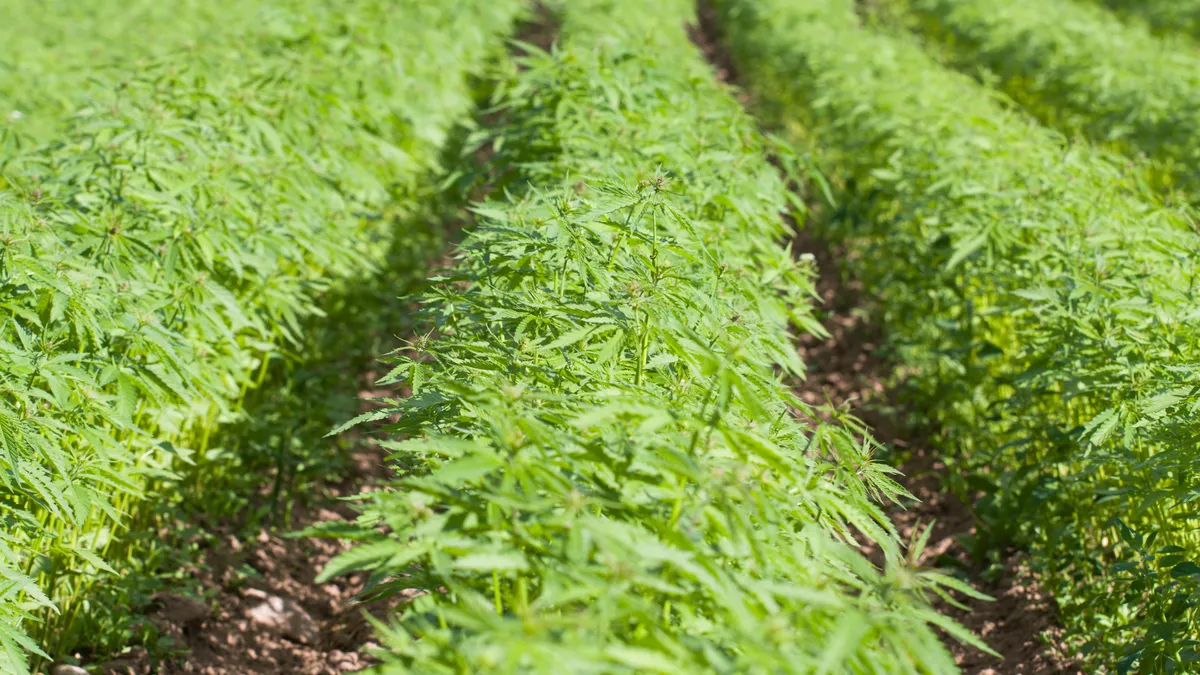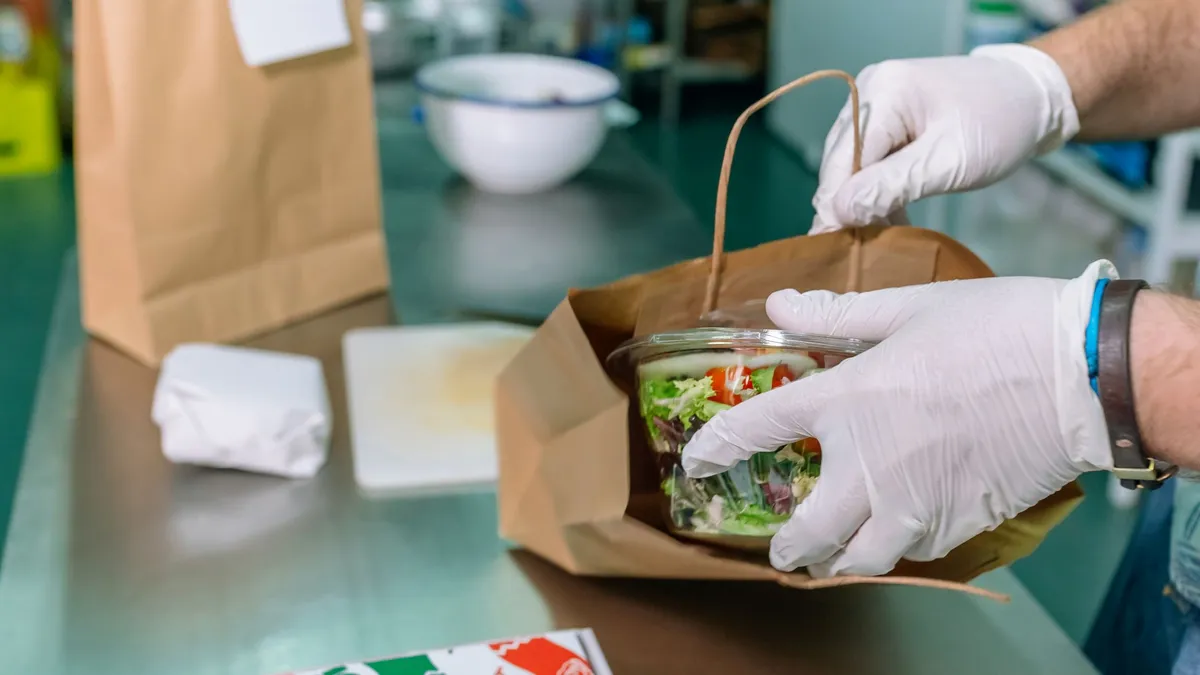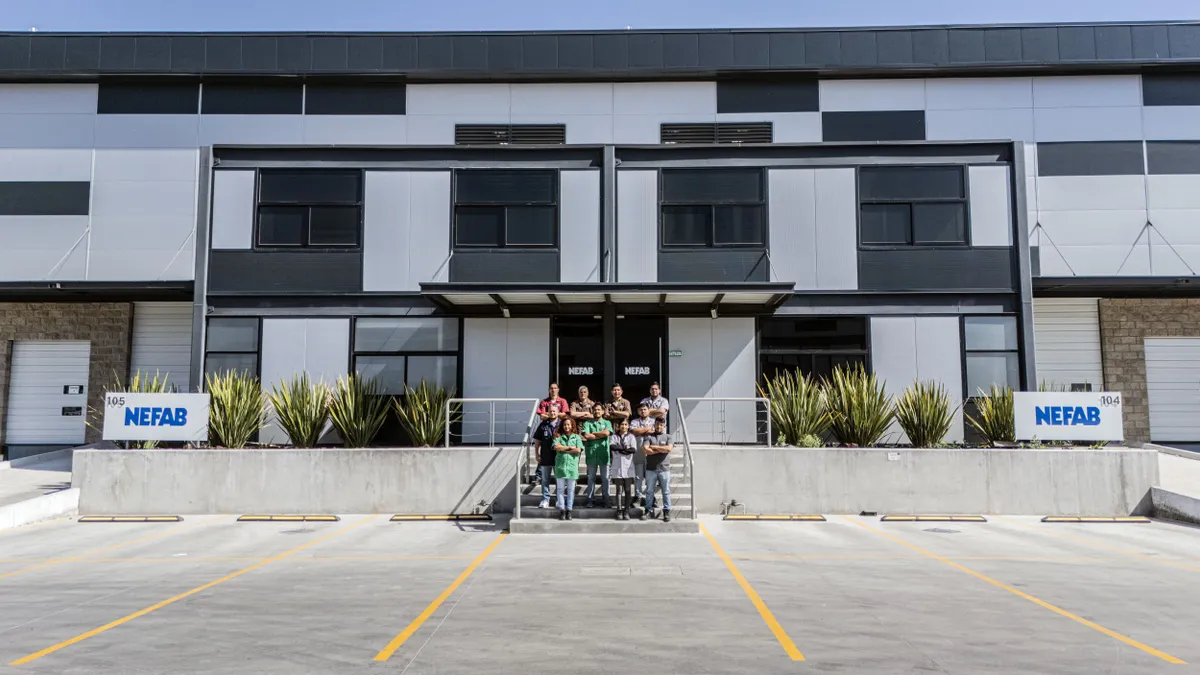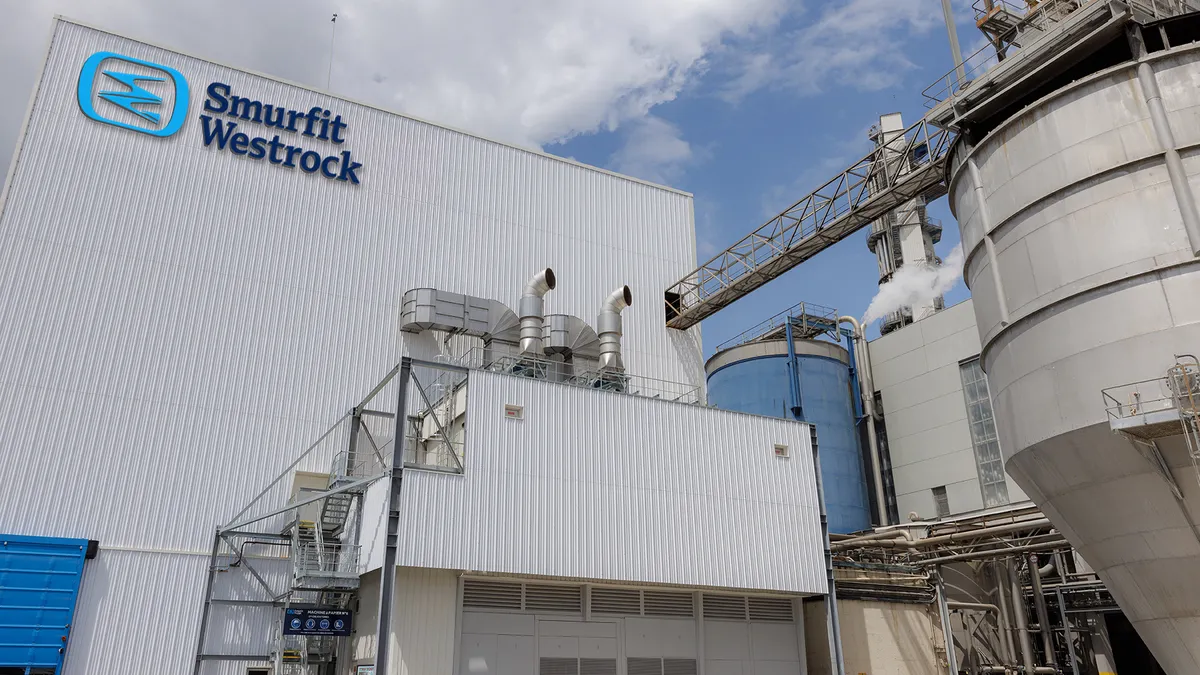Is the packaging industry ready for a hemp infusion? A Colorado-based startup is trying to change some people’s attitudes on industrial hemp and introduce it as a pulp feedstock for making paper and packaging. And element6 Dynamics says its hemp pulp is more sustainable than pulp derived from trees.
The startup is in the pre-revenue stage and is ready to commercialize its hemp pulp biorefinery concept. It has done commercial-scale trials and product viability testing. After identifying six potential sites in multiple states, the business currently is in negotiations for three pulp mills: one each in Kentucky, New York and Wisconsin. It expects to announce the first location early in the third quarter.
“We're going to be putting them literally right next door to, or maybe even right on, a paper mill site,” said CEO Kimberly Kovacs. “Those paper mills are really our customer because they control that step. So we provide them the pulp, they then create the packaging.”
Industrial hemp is a cannabis plant and is used to make a variety of products instead of being used for drug-related properties. While hemp was a marketable crop in the U.S. in the early 20th century, 1970’s Controlled Substance Act essentially banned cultivation and sales of all forms of cannabis, including industrial hemp. That changed with the 2018 farm bill, which legalized hemp production.
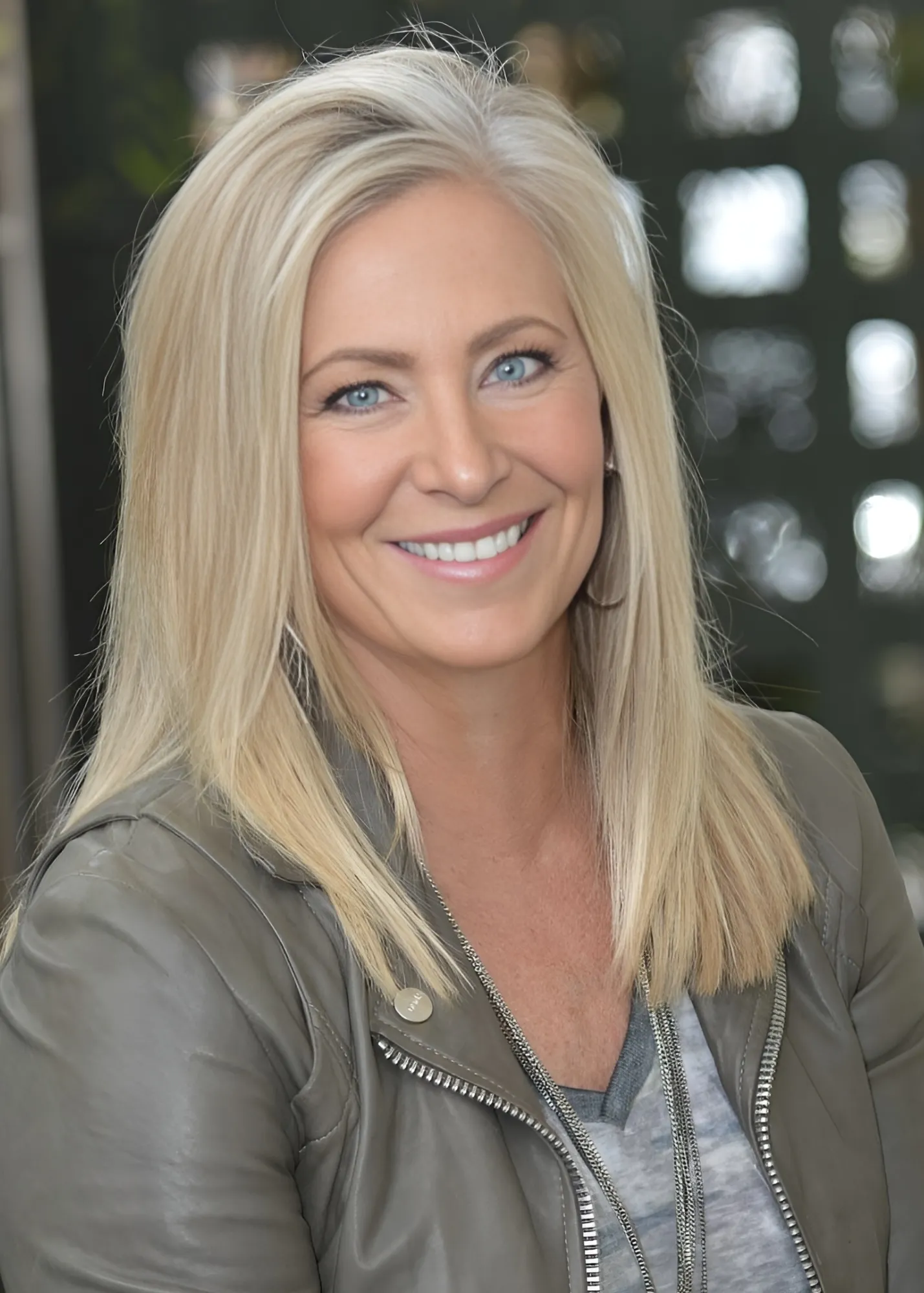
Previously, element6 Dynamics was called Santa Fe Farms and had cultivated its own hemp on thousands of acres of farmland. It dabbled in the CBD market but pivoted to industrial hemp in 2022, Kovacs said, adding that the business certified its seed and it does not contain THC.
Executives learned that their most economical business model for industrial hemp cultivation is to contract with farmers in multiple states who grow the company’s specific varieties.
e6D calls industrial hemp a “regenerative and renewable crop which biomediates soil by locking carbon, heavy metals and pesticides into its plant fibers and soil.” The business also says industrial hemp is “more recyclable” than tree fibers, requires less bleaching during production and results in a 50% reduction of carbon dioxide equivalent per ton of pulp produced compared with the conventional kraft pulp process.
Kovacs, who has led six startups in her career, recently spoke with Packaging Dive about e6D’s work to replace softwood kraft pulp with industrial hemp pulp, including the beneficial uses and how a byproduct serves as a second income stream.
This interview has been edited for length and clarity.
PACKAGING DIVE: Tell me how element6 Dynamics works and what makes it different from conventional fiber packaging material production.
KIM KOVACS: We are decarbonizing the pulp and paper industry, and we do that in two ways. We introduce a new feedstock into the system, which is hemp. Interestingly enough, it’s not new. We used to use hemp in our paper and manufacturing process way back when until it was deemed illegal. So we're bringing it back.
The second thing is the pulping technology that we use is sulfur-free. What that means is that our greenhouse gas output is about 50% less than traditional pulp methodologies that use a really harsh chemical, mechanical process.
By introducing these two things, we have a new, cleaner, greener solution that's also regenerative.
Describe in a bit more detail the differences between paper made from hemp and that made from trees.
Pulp can come from a number of different sources, including trees. You have softwood trees that are grown up in the northern parts of this world, you have hardwood trees that are grown in certain areas like the Carolinas and different parts of the U.S., you’ve got eucalyptus, you’ve got things like bamboo, you’ve got recycled pulp. And there's a growing group of folks focused on what we call alternative fibers: Those are alternatives to wood. Things like wheat straw, excess barley or any other agricultural waste, all of these can be broken down and turned into pulp. For the paper and packaging industry, to take our reliance off of tree-based materials, we're really turning to these alternatives.
Recycled has been kind of the first go-round, but unfortunately, that breaks down too. So after about four times, you can't really recycle it anymore and you’ve got to add back in virgin material. So what do you add back in? More trees? Or can we start looking at these alternative fibers?
As far as the actual performance of that pulp, our hemp pulp is better. Hemp is a longer, stronger fiber material that grows super fast — in 80 days we get up to 10-foot-tall stalks. So we have the ability to add a lot of strength to our pulp. And for packaging, in particular, you want it to be really strong.
Is there a specific type of packaging for which this pulp is a particularly good fit?
On the packaging side, we are the strength layer. I like to use the example of a cardboard box. The middle or outer layers of the box are where you really need strength. Anything in boxes: liquid containers — think of your juice boxes or your ice cream containers — where they need to have enough strength and they're not going to fall apart when you put something liquid in it or put it in the microwave, for example. That's where our hemp pulp really is quite the solution.
Is this material intended to be used on its own or does it also work well blended with other materials?
I actually recommend doing it as a blend because hemp just isn’t that ubiquitous yet in the U.S. We outlawed it until 2018, so hemp farming is just coming back.
Now that we're really transitioning the hemp industry to industrial hemp, and we grow it like a corn stalk and we grow it like wheat in these massive farms, that will now drive more adoption from a farming standpoint. But until we get there, I would suggest a blend is a better approach, because you can still rely on the industrial complex that we have.
Right now we're blending between 20% and 30% — that’s kind of the ideal ratio to have this alternative fiber.
When many people think of alternative packaging materials, they automatically think “more expensive.” Talk about the economics of your material.
Yeah, what do we call that, the “green tax”? It’s really such a shame.
If we look back to other emerging new technologies, like electrification of vehicles and other things, those things are expensive. I think the first Beyond Meat hamburger was thousands of dollars a pound. We, too, have a price curve to hit.
But one of the really interesting things that we found with ours ... is that when you take a tree and you break it down and you make pulp out of it, you use a process. That kraft process uses sulfur. The result you get when you make that pulp is pulp and a co-product called black liquor. Black liquor, under the kraft process, is basically a biohazard. You can’t really dispose of it. The only thing you can do is use it as a fuel. But if you can't use it for fuel, then you have to figure out how to get rid of it. And there's no revenue associated with that stream.
We have a sulfur-free process. So as we make pulp, we get our pulp but we also get a co-product that we can sell. It’s USDA BioPreferred. Right now, what we do with that co-product is road dust abatement. We can take our product and literally right out of the refining process put it right on the road, and it keeps the dust down. But it also starts to create a harder layer on top. As you put more and more on top of it, it almost becomes like an asphalt. Our co-product can also be used as a fertilizer because it’s so clean.
From an economic standpoint, having two income streams off of a single process puts us at a very competitive advantage to the tree-based pulp that only has one income stream. So we can withstand commodity price fluctuations. We can actually potentially bring our pricing down below commodities.
We did as much work on the economics as we actually did on the product itself to come up with this ability to sell it into the market at commodity pricing or less.
What’s coming down the pike for element6 Dynamics, both in the short-term and long-term?
Once we get our first pulp facility up and running, we believe that this is a model that can be adopted across the country, potentially even globally, where we take the regional approach. To me, this is really the heart of everything for us as a company: engaging stakeholders that really haven't had a seat at a table for a while.
What I mean by that is: We go into a region — let's say we're in Wisconsin, and we're creating a pulp facility in Wisconsin. Well, the first thing we do is talk to the local farming community. We need 10,000 to 15,000 acres of farmland. We already have great relationships with farmers in Wisconsin, and they want to now have hemp as a rotational crop in and amongst their corn. They commit to growing our product, we have an offtake partner, which is a big paper mill, and then at the end we put in a pulp facility.
Look at some of the things that have happened in, let's say, Wisconsin or Kentucky or New York or Alabama or any of these areas where we used to have 30, 40, 50 paper mills: They're closing their doors. We’re bringing jobs to these regional areas. We are reinvigorating some of these farmlands and providing a regenerative farming opportunity. We're keeping some of these small farms from selling out or going under, because they can now get more per acre than they could for some of the other crops that they were growing. One of the things that we're going to commit to once we start to build these facilities is that every year, if we have the profits out of that facility, we're going to pay off one farmer’s debt.
We're cutting down on transportation with the regional approach. The life cycle assessment of our product is really low because we're not having to transport a tree 1,000 miles to get to a pulp mill or a paper mill.
You’re also managing director of Arroyo Ventures, which focuses on women investors and entrepreneurs. Why do you think it’s important to have a focus on women in this space?
I've raised a lot of money in my career, and I've managed a lot of investment dollars. I think there's definitely still a wide gap between the needs of female entrepreneurs and the investing of females back into the system. There's a lot of history. There's a lot of psychological baggage when it comes to money and how women perceive investment — and the duty they have to investing in companies versus philanthropic work. Arroyo is all about bringing those issues to the front and center.
Yes, we need more women to write checks. But we also need women to step into really hard roles and into businesses that are outside of what I would say is their comfort zone. What we need are things that are investable not just by angel investors or early stage, but like venture capital: which is AI and technology, which is ag tech, which is material science. These are the companies that we women should be starting and then going out to fund, as opposed to consumer product companies or other things. That's my opinion. I think the more that we do that, the more we'll have seats at the table, and investors will be there for it.



